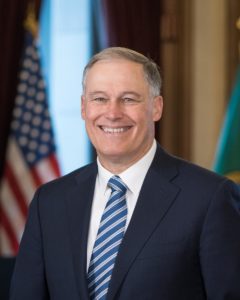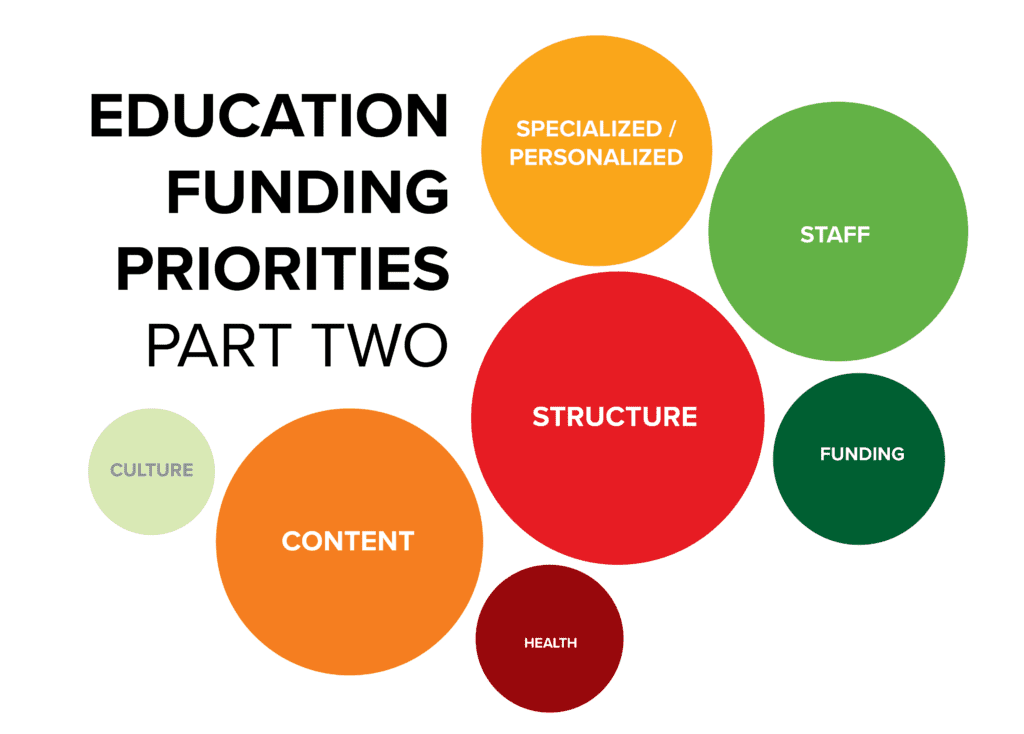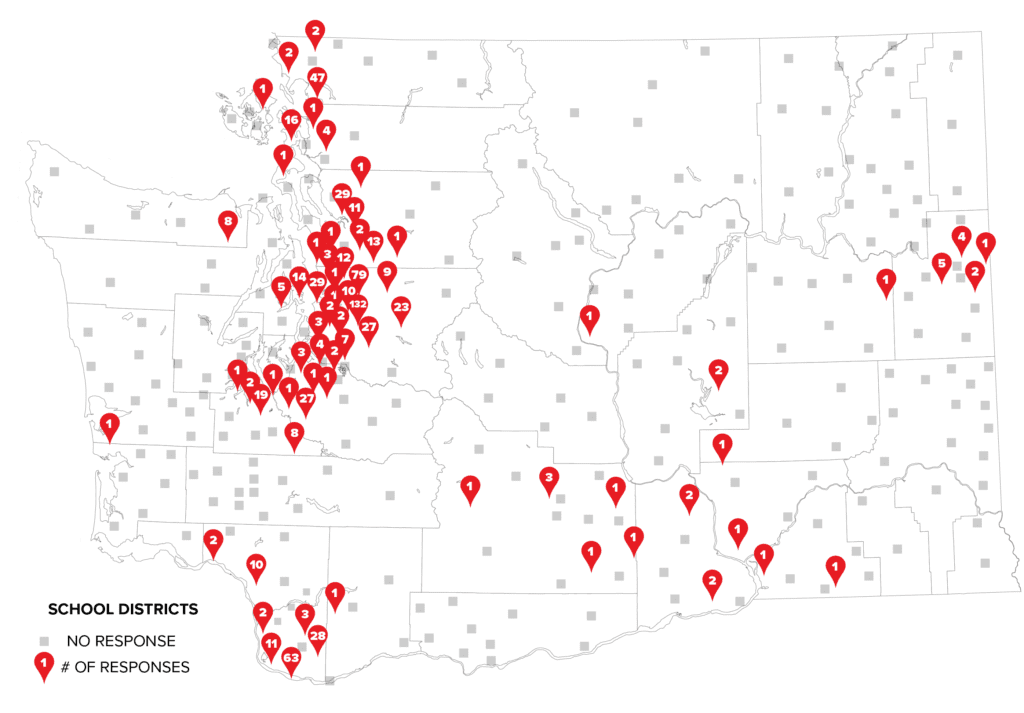2019-2021 Biennial Budget Summary
By League of Education Voters Policy Team
The Washington state legislature has passed its 2019-2021 biennial budget. See how it compares with the Senate, House, and Governor Inslee’s budget proposals. Read More
Building a quality public education system from cradle to career.
By League of Education Voters Policy Team
The Washington state legislature has passed its 2019-2021 biennial budget. See how it compares with the Senate, House, and Governor Inslee’s budget proposals. Read More
By League of Education Voters Policy Team
The Washington state Senate has released its 2019-2021 biennial budget proposal. See how it compares with the House and Governor Inslee’s budget proposal: Read More
By League of Education Voters Policy Team
We believe students come first. We are focused first and foremost on meeting the needs of every student.
We are dedicated to designing an equitable education system that serves all students based on their strengths, supports their needs, and provides the resources they need to be successful.
We are committed to working to close gaps experienced by historically and systemically underserved students— including students of color, students in poverty, students qualifying for special education services, students learning English, and students impacted by trauma. We believe this will lead to all students experiencing greater success and reaching their full potential.
 Historically, local levies have provided about one quarter of K-12 education funding in Washington state, amounting to $2.6 billion in school year 2018-19. In 2018-19, districts raised an average of $2,395 per student in local levy funding, with levies ranging from $86 per student in some districts to over $4,000 in others. This difference is driven not only by the levy rates, or amounts that district voters agree to tax themselves, but also by the property values in a district.
Historically, local levies have provided about one quarter of K-12 education funding in Washington state, amounting to $2.6 billion in school year 2018-19. In 2018-19, districts raised an average of $2,395 per student in local levy funding, with levies ranging from $86 per student in some districts to over $4,000 in others. This difference is driven not only by the levy rates, or amounts that district voters agree to tax themselves, but also by the property values in a district.
For example, in 2018-19 one district passed a levy of about $1.13 per $1,000 of assessed value and raised $198 per student, while a higher property value district passed a similar levy of $1.14 per $1,000 of assessed value to raise $4,381 per student. (1)
As part of the legislative solution to fully fund basic education, several changes were made to how much districts can raise through the levy system that went into effect in January 2019. The two biggest changes to the levy system relate to the formula used to calculate how much districts can raise through levies and placing a lower overall limit on how much districts can raise. (2) Read More
By League of Education Voters Policy Team
We believe students come first. We are focused first and foremost on meeting the needs of every student.
We are dedicated to designing an equitable education system that serves all students based on their strengths, supports their needs, and provides the resources they need to be successful.
We are committed to working to close gaps experienced by historically and systemically underserved students— including students of color, students in poverty, students qualifying for special education services, students learning English, and students impacted by trauma. We believe this will lead to all students experiencing greater success and reaching their full potential.
 Districts receive both state and federal funding to provide educational services and supports to students with disabilities, with state funding providing the biggest portion of funding. There are several factors that determine how much special education funding a district receives, but the two factors that most impact the level of state funding for special education for school districts are:
Districts receive both state and federal funding to provide educational services and supports to students with disabilities, with state funding providing the biggest portion of funding. There are several factors that determine how much special education funding a district receives, but the two factors that most impact the level of state funding for special education for school districts are:
 In our podcast, we interview policymakers, partners, and thought leaders to spotlight education policies, research, and practices so that together we can create a brighter future for every Washington student.
In our podcast, we interview policymakers, partners, and thought leaders to spotlight education policies, research, and practices so that together we can create a brighter future for every Washington student.
In this episode, League of Education Voters Communications Director Arik Korman asks Glenna Gallo, Assistant Superintendent of Special Education Services at the Office of the Superintendent of Public Instruction (OSPI), about her career path, what she sees as the biggest opportunity in Washington state to support students with disabilities, and how she would change the broader education system if there were no budgetary constraints.
Listen:

In our podcast, we interview policymakers, partners, and thought leaders to spotlight education policies, research, and practices so that together we can create a brighter future for every Washington student.
In this episode, League of Education Voters Communications Director Arik Korman asks Governor Jay Inslee what he sees as the biggest challenges and opportunities in education from pre-K through higher ed and how he addresses them in his 2019-2021 budget proposal, what he hopes to achieve with special education funding changes, why focusing on student well-being is important, and why he chose to dedicate funding toward student supports in higher education.
Listen:
By Chris Korsmo, League of Education Voters CEO

Friends,
As I prepare to leave the League after nearly twelve years, I’ve had the chance to reflect on our work, our wins, losses, and what lies ahead. I’m incredibly proud of my service to LEV and the kids we work so hard for. This team is talented, compassionate, and committed to improving the lives of our students and families – in particular, those furthest from opportunity. These past dozen years or so have been a tutorial on the changing needs and assets of Washington’s students, a slow societal and organizational awakening to the inequities we’ve baked into our entire system including the education system, and coming to terms with the need to change strategies to match or stay ahead of changing realities. Like all good living things, we’ve grown and changed, and we think we’re more impactful because of that evolution.
We started out 18 years ago focused on K-12 education funding, with the thinking that if we just put enough resources into the system, everything would be all right. We soon learned that money, while important, isn’t the only resource we need to consider. And we learned that if we start in kindergarten, we’re too late, and that ending at high school doesn’t guarantee much in terms of success for kids and families. Read More
 By Jacob Vela, Senior Policy Analyst
By Jacob Vela, Senior Policy Analyst
As districts across the state start planning for next school year they will be faced with some unfamiliar choices as they look to allocate $2.5 billion more in state funding next school year than the current school year. The most recent increase in state education funding was directed mostly to increase K-12 staff salaries, including the more than 50,000 teachers across the state. This was a key part of the court’s ruling as the state has underfunded teacher salaries for many years leaving districts to pick up the tab if they wanted to offer teachers a competitive salary.
As districts plan for how the influx of money will be spent in the face of the shifting funding landscape districts and community members will have some difficult questions to consider:
By Julia Warth, Director of Policy and Research
 The recent investments and changes made to the K-12 funding system in response to the Washington State Supreme Court McCleary ruling will have long-lasting impacts on our education system. While progress has been made to adequately fund basic education, more work remains to ensure that we equitably fund basic education. League of Education Voters is committed to working with districts and partners to continue to move towards an education system that is funded to provide every student what they need to succeed.
The recent investments and changes made to the K-12 funding system in response to the Washington State Supreme Court McCleary ruling will have long-lasting impacts on our education system. While progress has been made to adequately fund basic education, more work remains to ensure that we equitably fund basic education. League of Education Voters is committed to working with districts and partners to continue to move towards an education system that is funded to provide every student what they need to succeed.
We will be providing a number of resources and series of analyses that will highlight some of the remaining opportunities and work ahead looking towards the 2021 legislative session. These include:

As mentioned in Part One, to help direct our work with our community to create positive change in Washington’s education system, we sent out a survey via email and social media channels in May to learn how Washington community members would like state education funding prioritized. We thank the 737 people, from 71 school districts across the state, who submitted responses.

Our survey first offered respondents an opportunity to rank 16 pre-established funding priorities to make the most difference for students [view results in Part One]. Then respondents had the opportunity to write in other priorities. Over 58% of the respondents added further priorities. Read More